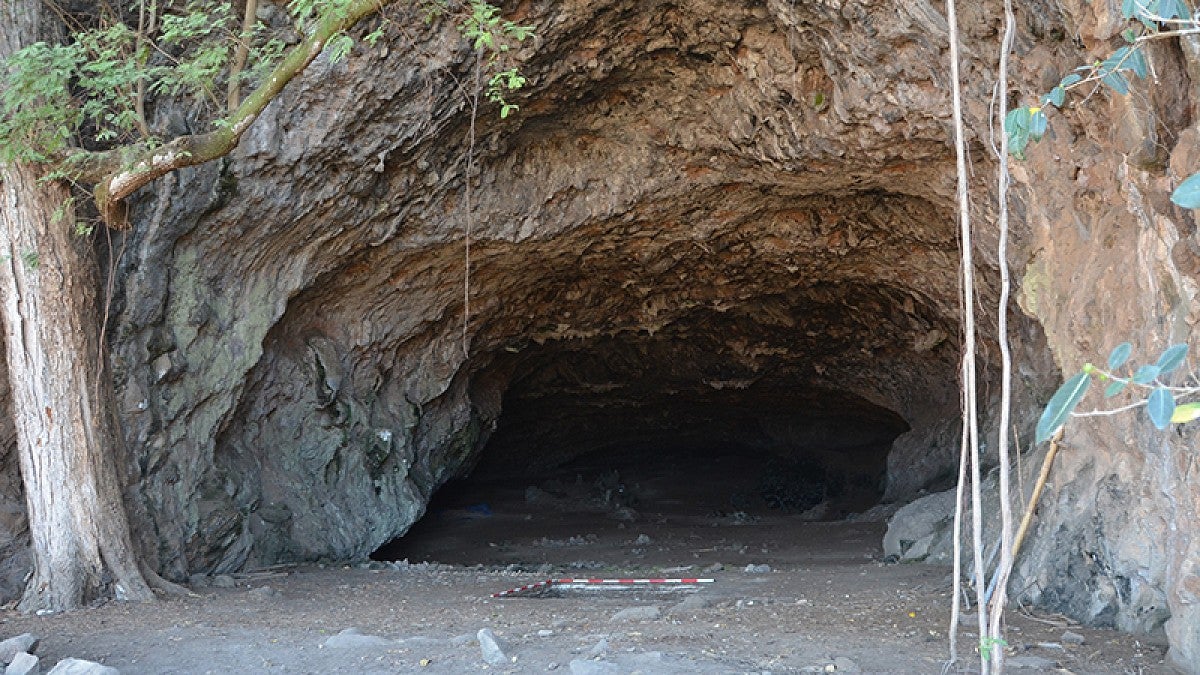A review of evidence on islands around the world has led researchers, including the University of Oregon’s Scott Fitzpatrick, to pour water on the long-held notion that modern humans drove the extinction of large animals more than 12,000 years ago.
Instead of overhunting, it was human impact along with a changing climate following the last ice age and random occurrences, said Fitzpatrick, a UO archaeologist in the Department of Anthropology and associate director of the Museum of Natural and Cultural History. In fact, he said, humans deserve some credit.
“We, as archaeologists, expected people to have been major causes of extinctions on the islands, but, as we do more research, we are finding that people adjusted their behaviors to minimize their effects in these environments,” he said. “They, in some ways, created sustainable practices in places where we didn’t expect.”
Fitzpatrick was part of a 19-member international team, led by Julien Louys at Griffith University in Australia, that focused on archaeological and paleontological evidence tied to the arrival of modern humans on islands that have long stood apart from continents. These humans accelerated exploration and settlement of islands at the close of the last ice age, a transition period between the Pleistocene and Holocene epochs. Some islands had evidence of earlier human habitation dating to 50,000 years ago.
The team’s findings published online this month in the Proceedings of the National Academy of Sciences. The study’s framework emerged from a 2017 workshop funded by the Australian Research Council. Fitzpatrick’s expertise involves the early migration and settlement of Caribbean and Pacific Ocean islands.
Later human arrival did affect extinction on some islands, the researchers noted. On the New Zealand islands and some 40 other Pacific islands, nine species of birds and at least 25 other vertebrates went extinct within centuries of human settlement in the late Holocene. Evidence also indicated widespread extinctions on Indian Ocean islands.
This pattern established the idea that human arrival fueled later extinction elsewhere. Humans, it was argued, entered pristine island environments, overhunted, altered island habitats and introduced invasive species.
Only on Cyprus in the eastern Mediterranean and Japan’s Kume Island did data from modern human arrival support a connection to widespread extinction, the researchers concluded. All other late Pleistocene and early Holocene extinctions, they wrote, could not be directly attributable to human arrival. Extinctions also coincided with large-scale climate and environmental changes, but not random events such as volcanic eruptions.
Humans landing on pristine islands before the Holocene were unlikely to have had the wherewithal to trigger widespread extinctions, the researchers argued.
“We cannot connect the dots between these humans getting to these islands early enough and the extinction of fauna,” Fitzpatrick said. “We developed a chronological baseline for human arrival and for what came afterward. When we could match up the human records and those from animal fossils, we didn’t find a lot of concordance.”
These human populations likely were small, and without sophisticated watercraft they did not have the capacity for multiple roundtrip journeys with supplies, he said. The research team also noted limited access to raw materials, including fresh water.
The evidence suggests that these early humans made mistakes but recognized the impacts their practices were having on their island habitats, leading them to adjust their subsistence strategies and cultural behaviors to survive, Fitzpatrick said.
“We know from working on islands around the world at all points in time that humans do seem to have an effect on island biota,” he said. “The vast majority of such evidence that we have for these extinctions, however, comes from periods in which people had already developed agriculture, domesticated animals and brought things with them to the islands in the last 3,000 to 5,000 years.”
Grants from the Wenner-Gren Foundation and Australian Research Council funded the project.
—By Jim Barlow, University Communications


